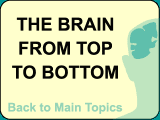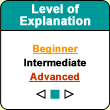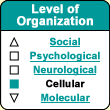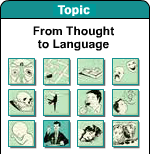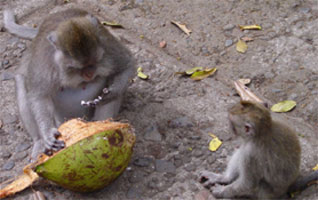| |
| |
 |
| Communicating in Words |
 |
| | |


The possible involvement of mirror
neurons in verbal communication suggests that we may perceive phonemes just as
much through the visual modality (seeing how someone’s mouth moves while
they make these sounds) as through the auditory modality (hearing the sounds themselves).
The “McGurk effect”,
discovered in the mid-1970s by English researcher Harry McGurk, supports this
idea that speech perception is multimodal. McGurk had subjects watch and listen
to a video in which someone spoke one syllable while a different syllable was
substituted for it on the sound track. The subjects perceived neither of these
syllables, but rather a third one that was different from them both. For example,
when the subjects watched someone saying “ga” while they heard someone
saying “ba”, the vast majority of them perceived the sound as “da”!
| | |
| ARE MIRROR NEURONS THE BASIS FOR COMMUNICATION? |
| Mirror
neurons were discovered by Italian physiologist Giacomo Rizzolatti in 1992.
They have been the subject of much discussion ever since, because they represent
a plausible basis for the development of an intentional communication system such
as human language. More specifically, mirror neurons may enable one animal to
mimic the movements of the limbs or mouth of another, so as to copy a gesture
or reproduce a sound to which a meaning is attached. In this way, over time, two
individuals might come to share a common vocabulary.
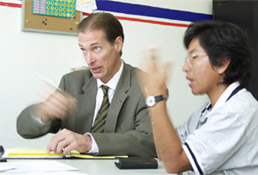 | This
hypothesis fits rather neatly with the
theory of a gestural origin of language. According to this theory, in the
course of human evolution, a portion of the brain areas responsible for motor
control assumed motor control of the larynx. (As an Italian, though, Rizzolatti
would surely be among the first to acknowledge that hand gestures still play an
important role in human language today, complementing that of speech.) |
The great effectiveness of the various forms of
sign language used by the deaf is yet another example of the complementary roles
that the hands and mouth play as communication tools. Hence it may well be no
accident that both the hands and the mouth have mirror neurons assigned to them
in the brain.
This hypothesis also fits with the inferences drawn by
American psycholinguist Alvin Liberman, who as early as 1965 proposed his
motor theory of speech perception. According to this theory, people understand
words by comparing and imitating a speaker’s articulatory gestures with
their own motor repertoire, and then form a lasting association between these
gestures and the actual words that they have heard being spoken.
Other
researchers have shown that humans also have mirror neurons for auditory phenomena.
The same neurons are activated when someone performs an action that produces a
sound as when they simply hear the sound that this action produces.
Mirror neurons have been shown to have some other interesting characteristics
as well. First of all, they will be activated when you see someone else’s
hand grasp an object, but not when you see a tool grasp the same object. The explanation
is that unlike tools and other human artifacts, human body parts are represented
in the motor and premotor areas of the brain’s frontal lobes. Second—and
here is where the implications for language become really interesting—mirror
neurons do not react to just any movements of the hand or mouth, but only to movements
that are involved in goal-directed actions.
| In other words, it is only when an action has a
meaning that it activates the mirror neurons. Their
response is thus associated with the expression of intentionality—that
is, with the purpose of the gesture observed. For example, certain mirror neurons
that are activated when a monkey manipulates an object will remain quiet when
the monkey uses the same muscles, connected to the same neurons, to perform a
similar action for a different purpose, such as to scratch itself or to pick an
insect out of its fur. | |
It is becoming more and more apparent that the
brain’s motor
system does not only control movements but can also in a certain sense read
the actions performed by other individuals. Mirror neurons may thus play a fundamental
role in all human social behaviour. |
|
